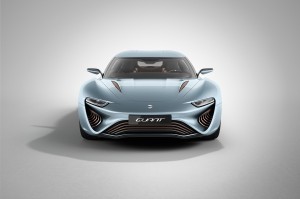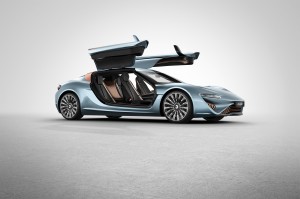
Amid all the supercars unveiled at this year’s Geneva show was a gigantic 5100-pound, 912-hp AWD, four-seat gullwing EV hailing from the pocket country of Liechtenstein. It promised a 0-62-mph time of 2.8 seconds and a range of up to 372 miles, which sounded too good to be true — especially when described by its zoot-suited, architecturally coiffed chief of development, Nunzio La Vecchia, who deflected all my specific questions about his battery. But it turns out the nanoFLOWCELL QUANT e-Sportlimousine’s first name describes a technology that’s undergoing legitimate ARPA-E funded research in America at places I’ve heard of and trust, such as General Electric and Lawrence Berkeley Labs. First developed by NASA in the 1970s, flow-cell batteries consist of a proton-exchange membrane such as those used in fuel cells, past which are pumped two ionic liquids — one positively charged and one negatively charged — to deliver or store electricity. The neat thing here is that the battery’s power is determined by the membrane and flow rates, while its storage capacity is independently determined by the volume of liquid. Yes, you need at least two tanks (the QUANT’s were 50 gallons each!), but they conform to available packaging space way better than do typical batteries. The nonflammable liquids are safer to carry onboard than current batteries. Get the membrane and liquids right (so there’s no cross-contamination), and there’s no “memory effect” nor any degradation in battery function with deep discharges and repeated recharging. Operating temperature is 140-180 degrees F, so efficiency is near that of typical batteries (80 percent).
You can recharge it as you do a battery, by plugging in and pumping the spent fluid back past the membrane, or you can simply pump out the spent fluid and replace it with charged fluid in the time it takes to gas up a car — as in a vastly simpler Project Better Place battery-swapping scheme. Flow-cell batteries are in use today in stationary applications storing surplus wind and solar power, using fluids containing materials such as vanadium. But the energy density is way down around 25-75 Watt-hour per kilogram — well under the best lithium-ion EV batteries (up to 200 Wh/kg). The ARPA-E grant monies pay chemists to find new organic and metal salt solutions that can boost that energy density to nearer the 600 Wh/kg figure nanoFLOWCELL is quoting for the QUANT. GE isn’t ready to divulge its patent-pending fluid chemistries, except to guesstimate cost at a quarter of that of lithium-ion with triple the range.
As with fuel cells, the flow-cell membrane isn’t great at moving big power instantly, so the QUANT carries a bank of ultra-capacitors to capture regenerative braking energy and provide a buffer for instant acceleration. Concerns yet to be hammered out include raw material costs, corrosiveness and temperature sensitivity of the water-based liquids, and of course the specifics on how one might establish an infrastructure for fast refueling/reconditioning of these ionic fluids. But if Better Place made a five-year, $850 million go of it, flow batteries seem a pretty solid use of the scant millions the Department of Energy is investing in projects such as the GE/Berkeley Labs one. And, Mr. La Vecchia, if it’s real, please sign me up for a test run in your 2.8-second Tesla-killer.
----------
If you liked this article, please subscribe to our YouTube Channel for tech news, reviews and video tutorials. You can also find us on Twitter, Instagram and Facebook.









